We scroll faster than we think. Notifications, feeds, tabs and contemporary life rewards velocity over attention. Ellen Claes' paintings do the opposite.
They root themselves in observation and slowness, transforming the infrastructure we ignore (control panels, stairwells, construction zones) into sites that demand you stop.
This isn't decorative painting.
It's resistance.
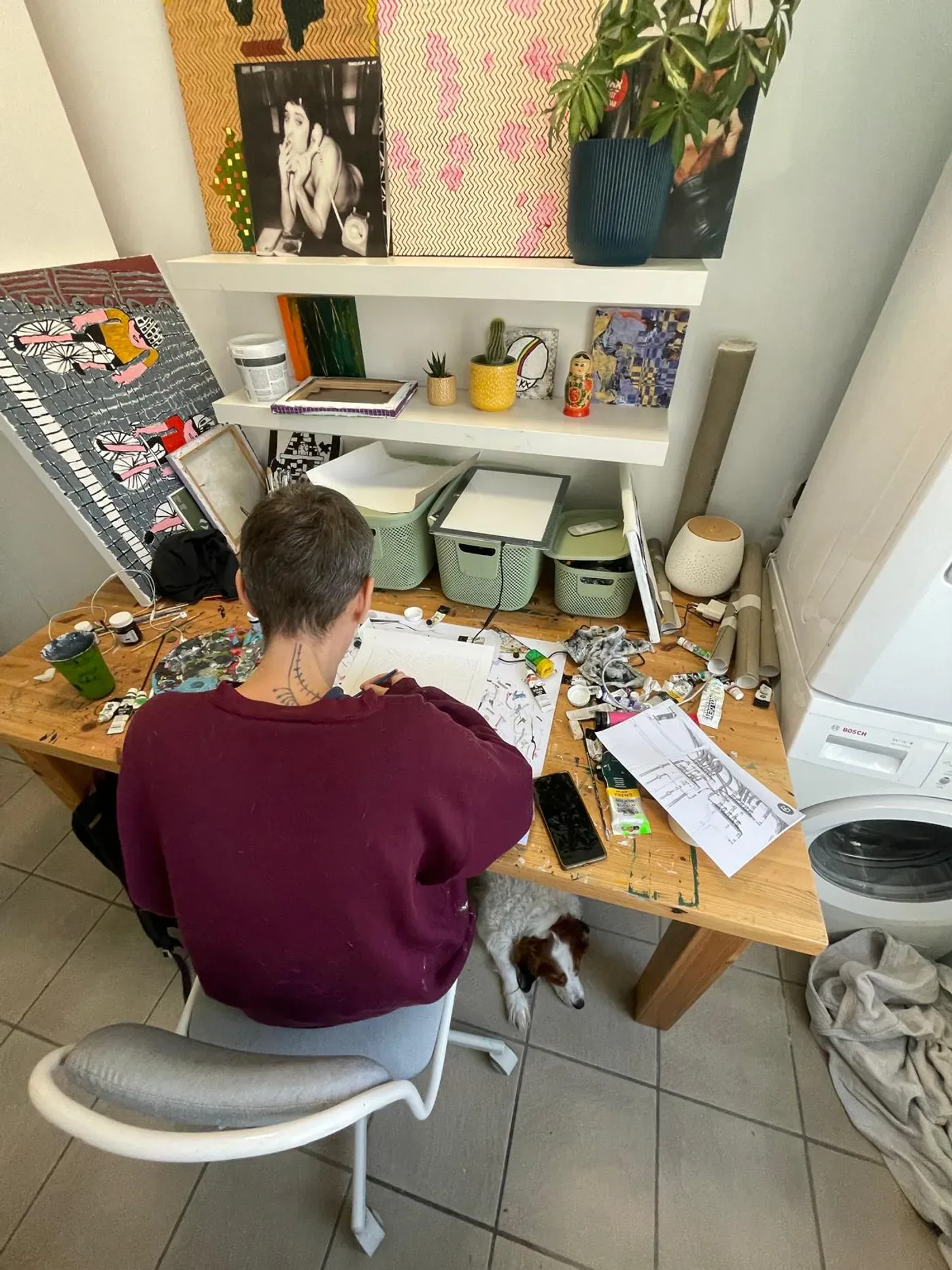
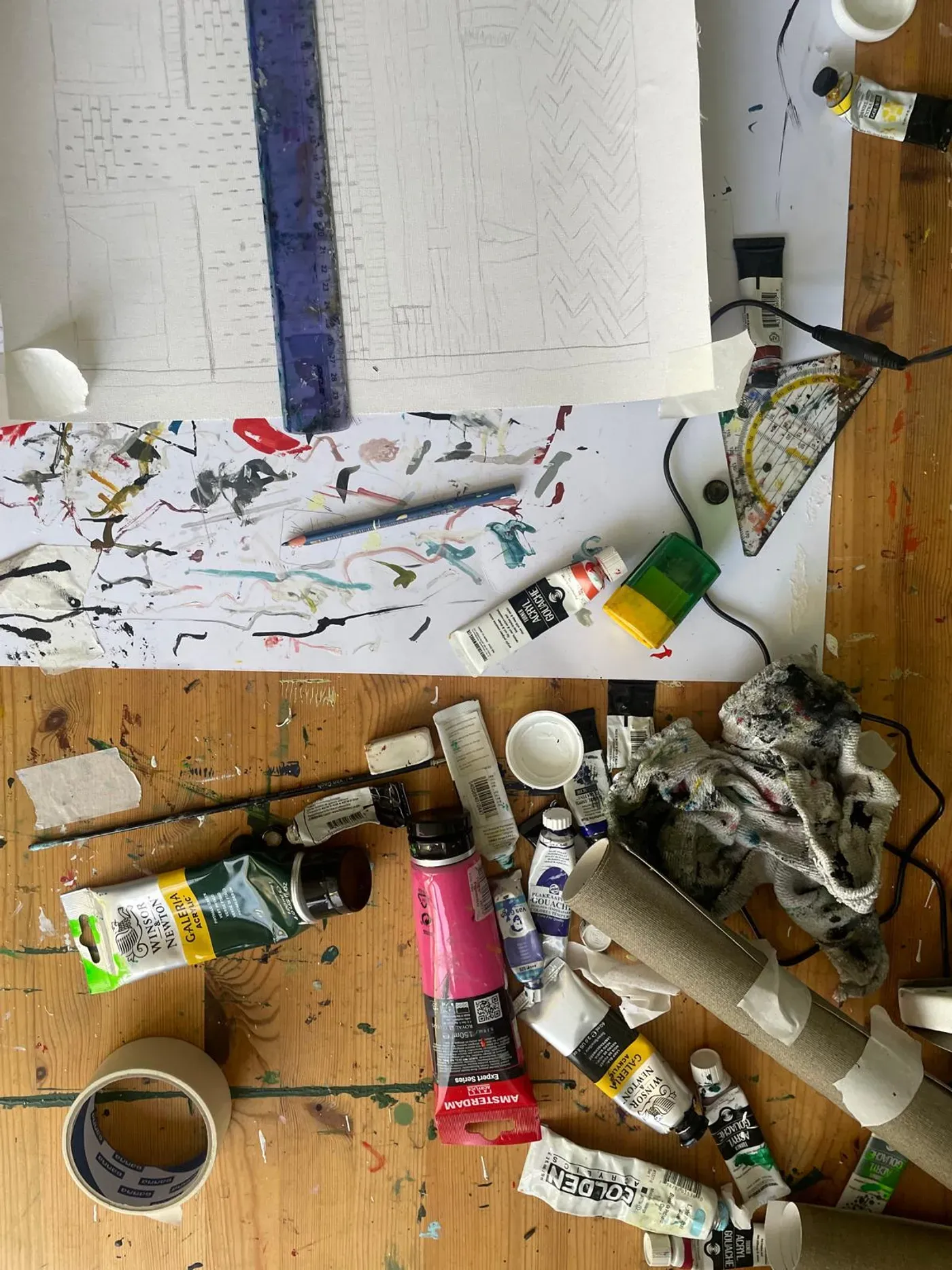
Ellen Claes in her studio with her dog Pixie, featured in the Artist Spotlight for Catapult – The New Munchies Art Club. Image courtesy of the artist.
Ellen Claes' Paintings of Infrastructure and In-Between Spaces
Based in Alken, Belgium, Ellen Claes paints the parts of the built environment we're trained not to see. Her recent work focuses on empty interiors: hallways, stairwells, transitional spaces where human presence is implied but absent.


Belgian artist Ellen Claes paints daily, offering a sneak peek into her studio and a view of her recent works. Image courtesy of the artist.

A control panel covered in colored buttons (yellow, red, blue, green) becomes a totemic object. Stacked pipes at a roadwork site glow against vibrant green trees. A red staircase spirals into itself, the perspective vertiginous, unsettling.
Claes describes her subject as "the moment before something unseen happens", that suspended state where everything feels charged but nothing has occurred yet.
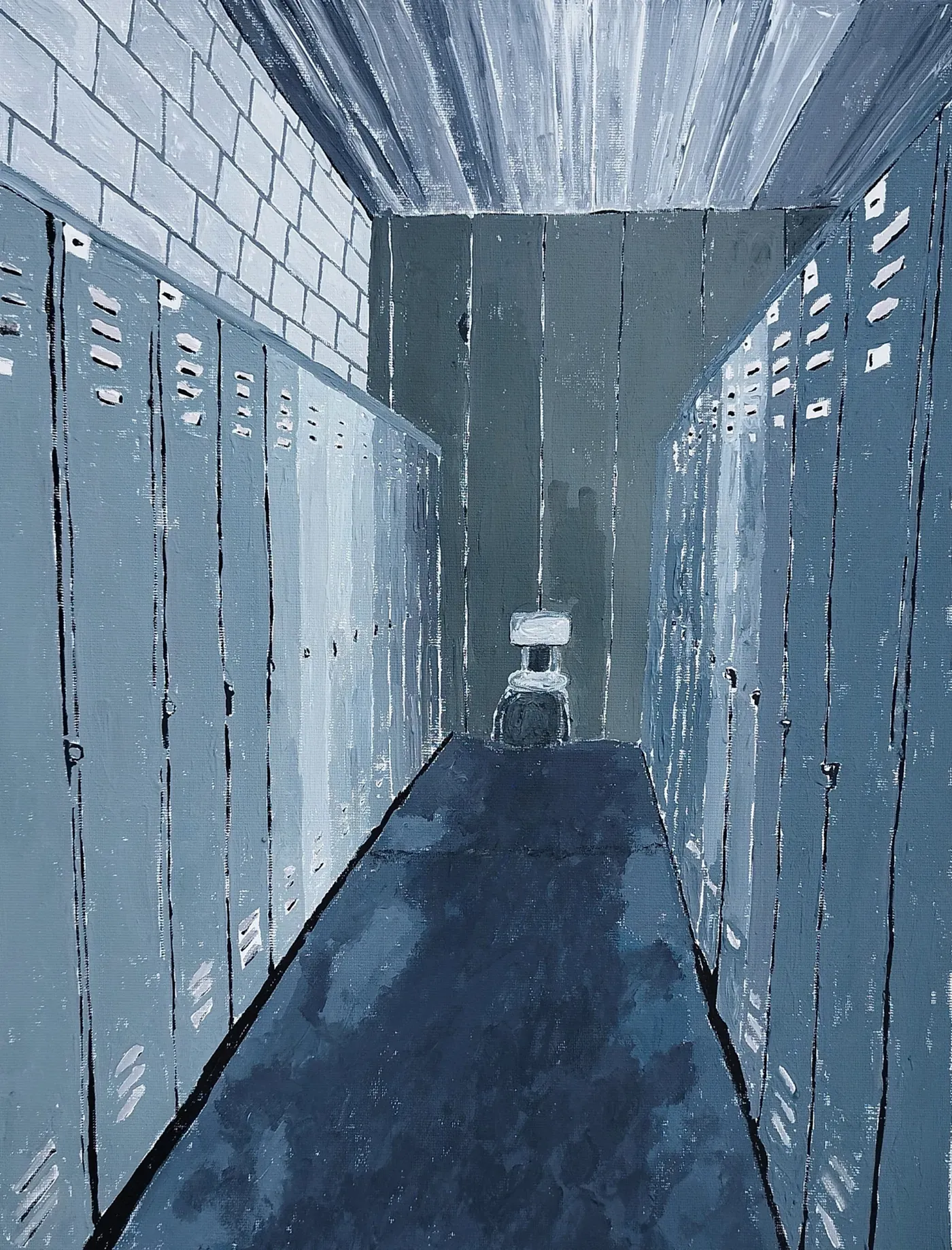

Ellen Claes, (left) I live between concrete walls and (right) Every arrow points somewhere I’ve already been. Both works on paper balance structure and mystery, where the titles act as quiet keys to her emotional architecture. Image courtesy of the artist.
The silence. The tension. The possibility that something could shift at any second. She's living in that space personally, navigating things that make the fragile in-between more than conceptual. That sense of waiting, of quiet threat, has become the core of her work.
She paints intuitively, searching for images that trigger her fragments of domestic architecture, sometimes from her own house.
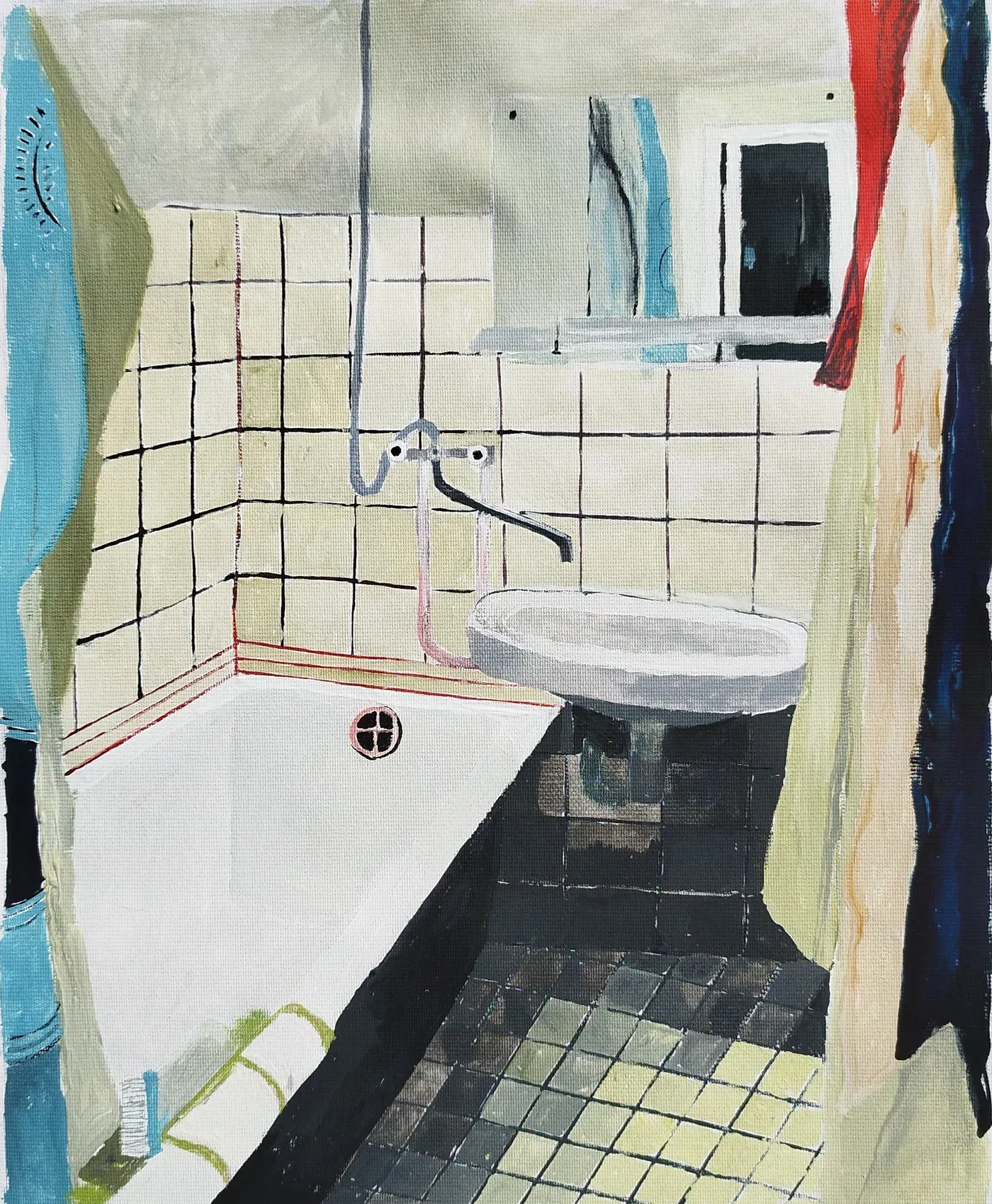
The work happens in her storage room, at a table next to the washing machine. Not romantic, but real. These aren't neutral documentations. Claes uses color shifting between muted grays and intense reds, deep blues to charge each scene with psychological weight.
The paintings ask: what happens when you actually look at the systems you're embedded in, and the spaces where everything still feels possible?
Why Slowness Matters Now
We're living in the fastest moment in human history. Information moves at digital speed. Attention spans shrink. The contemporary condition isn't just distraction, it's structural. Platforms profit from velocity. Algorithms reward engagement.
Stopping to look at a painting, really look, becomes a radical act.
Claes' practice positions itself explicitly against this pace. Her artist statement opens with "slowness -a quiet resistance against the pace of contemporary life."
That's not metaphor. It's method.

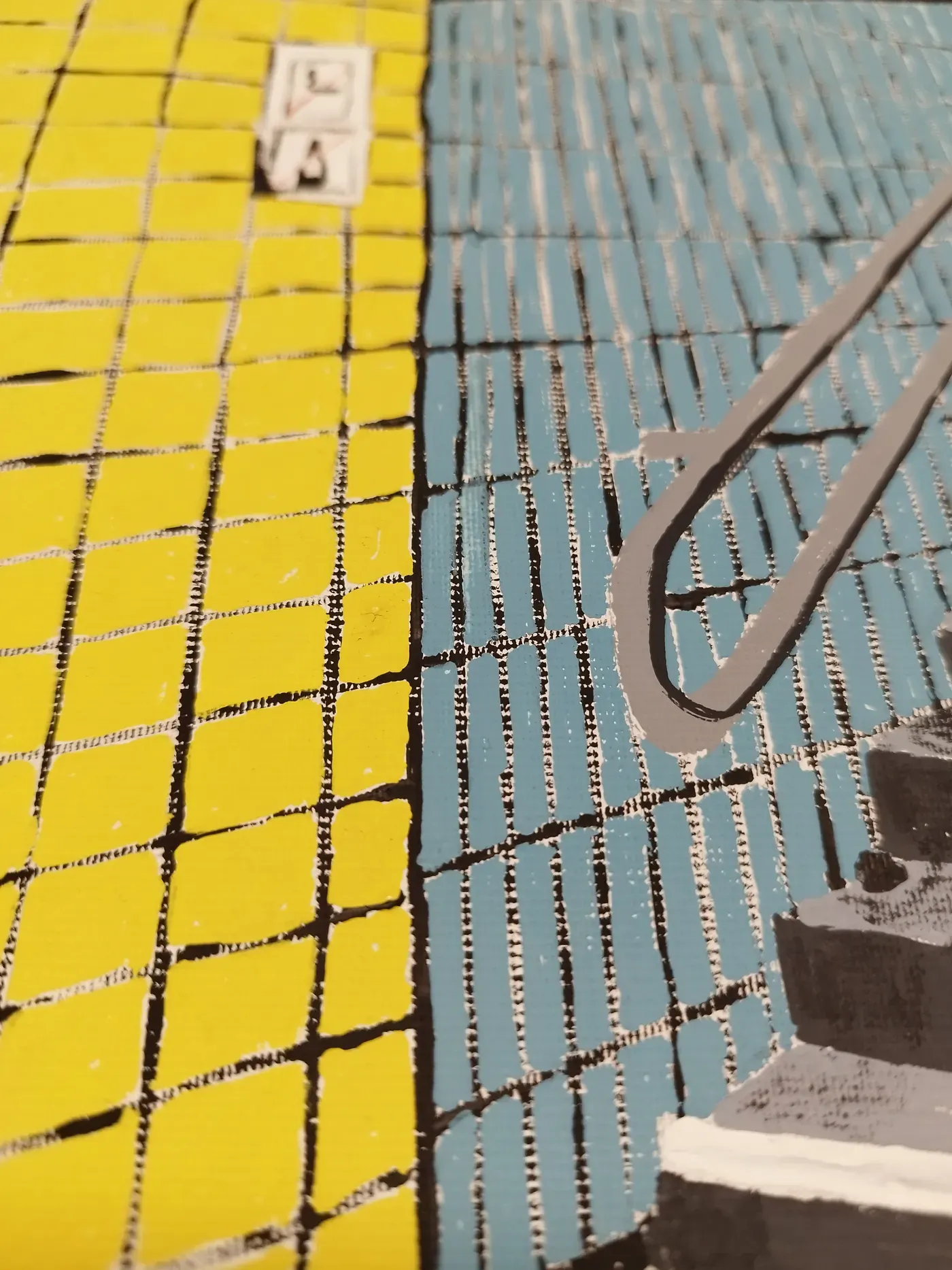
Ellen Claes, (left) Everything fades into another layer of grey and (right) Alone in a place meant for passing through. Gouache on paper and gouache on canvas. Claes describes “an undercurrent of tension, as if something has just happened or is about to unfold.” Stopping to really look becomes a quiet, radical act. Image courtesy of the artist.

The spaces she paints amplify this resistance. Hallways and stairwells are transitional, places we move through to get somewhere else.
But Claes stops time inside them. The empty subway hallway with its pink-and-black checkered floor. The industrial control panel with its tangle of cables. These images force duration. You can't glance at them the way you glance at infrastructure in real life. The paintings hold you.
And here's the tension: the emptiness isn't peaceful. Claes describes "an undercurrent of tension, as if something has just happened or is about to unfold." Her color choices, those deep reds, those stark whites against muted grays, create unease.

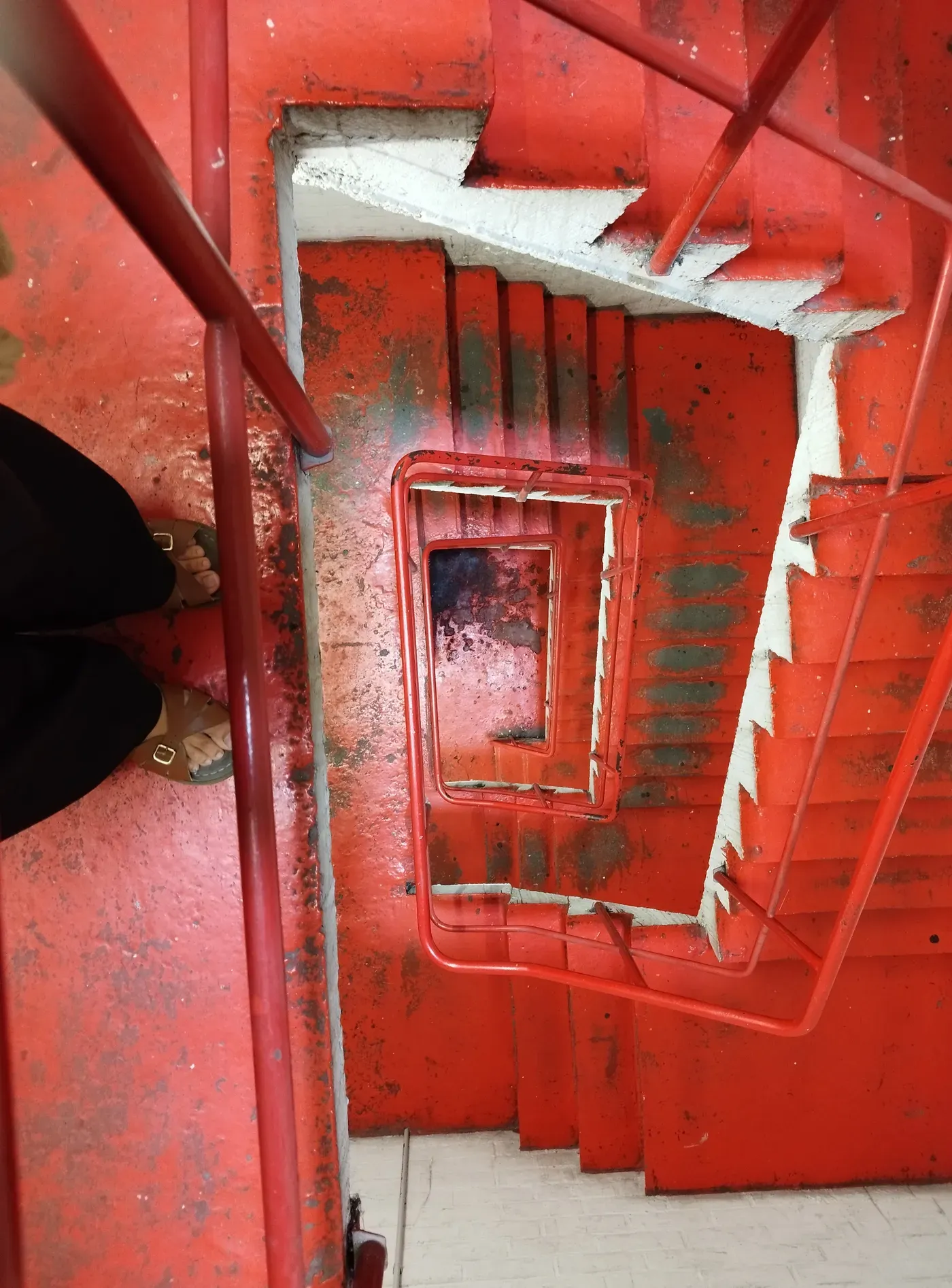
Ellen Claes, Want to get there – Take the next step. Left: the painting in acrylic and gouache on paper. Right: the original staircase that inspired it. Both works echo each other through their geometry and powerful use of red, showing how Claes transforms observation into abstraction. Image courtesy of the artist.
You slow down not because the image is calming, but because it's charged. That psychological weight is what makes the slowness stick.
It's personal for her living through uncertain transitions makes these spaces feel lived-in, even when they're empty.
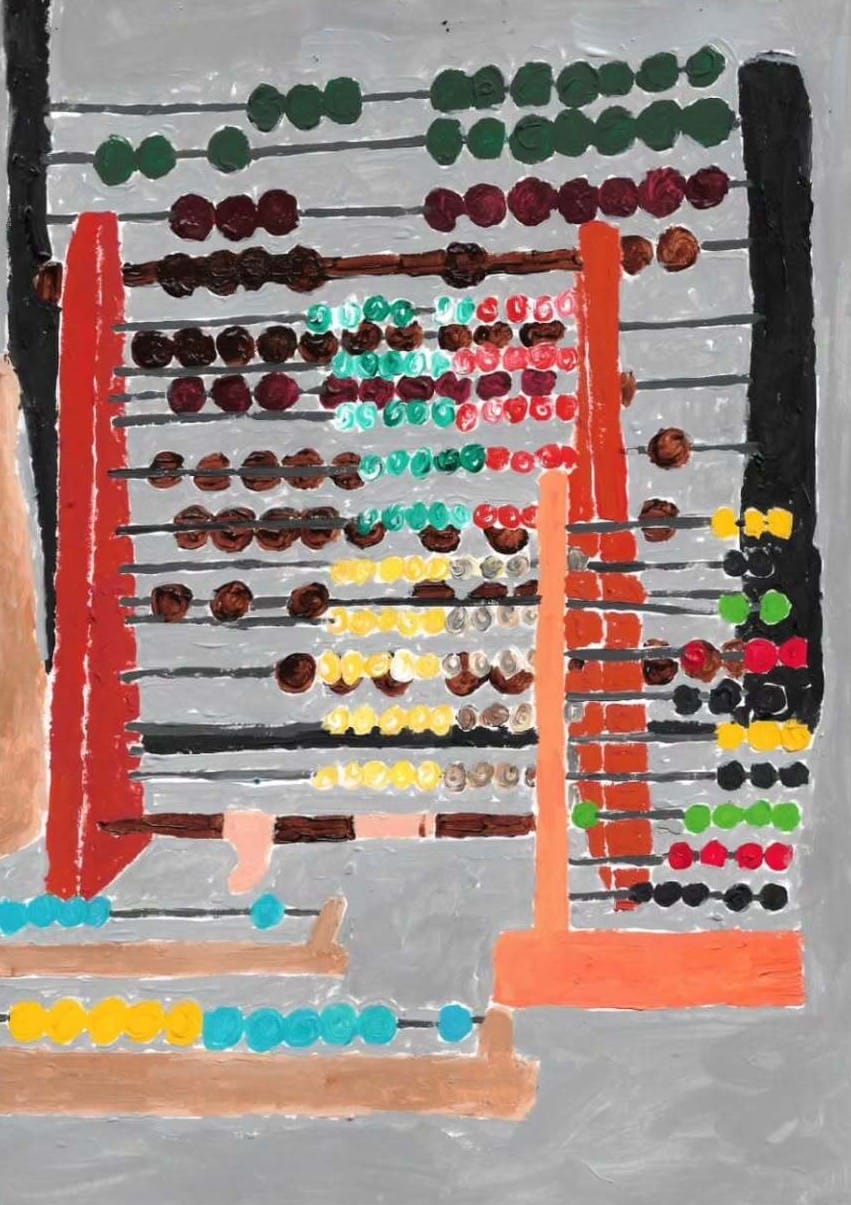
The Uncanny Charge of Everyday Infrastructure
Claes doesn't paint dramatic subjects. She paints control panels. Pipes. Staircases. Signs that read "Exit over victria / 10 rue de l'avi." These are the objects we're trained to ignore,the functional background of contemporary life.
But isolation and attention transform them. The control panel in Pressing Every Button becomes totemic, almost ritualistic.

Its colored buttons (yellow, red, blue, green) glow against black machinery and tangled white cables. The composition is frontal, direct, unavoidable. You're not observing infrastructure. You're confronting it.
This is where Claes' use of color does its work. The muted grays and whites create neutrality, but the sudden bursts of red, blue, yellow charge the scene with emotion.

In Roadworks Are Rarely a Joy to Look At, stacked pipes with red and blue caps sit against vibrant green foliage.
The title is wry, almost sarcastic, roadworks aren't joys to look at. Except here they are, rendered with enough care that you see them differently. The mundane becomes strange. The familiar becomes unsettling.
Claes describes this shift in her statement: "I explore the fragile boundary between familiarity and estrangement."
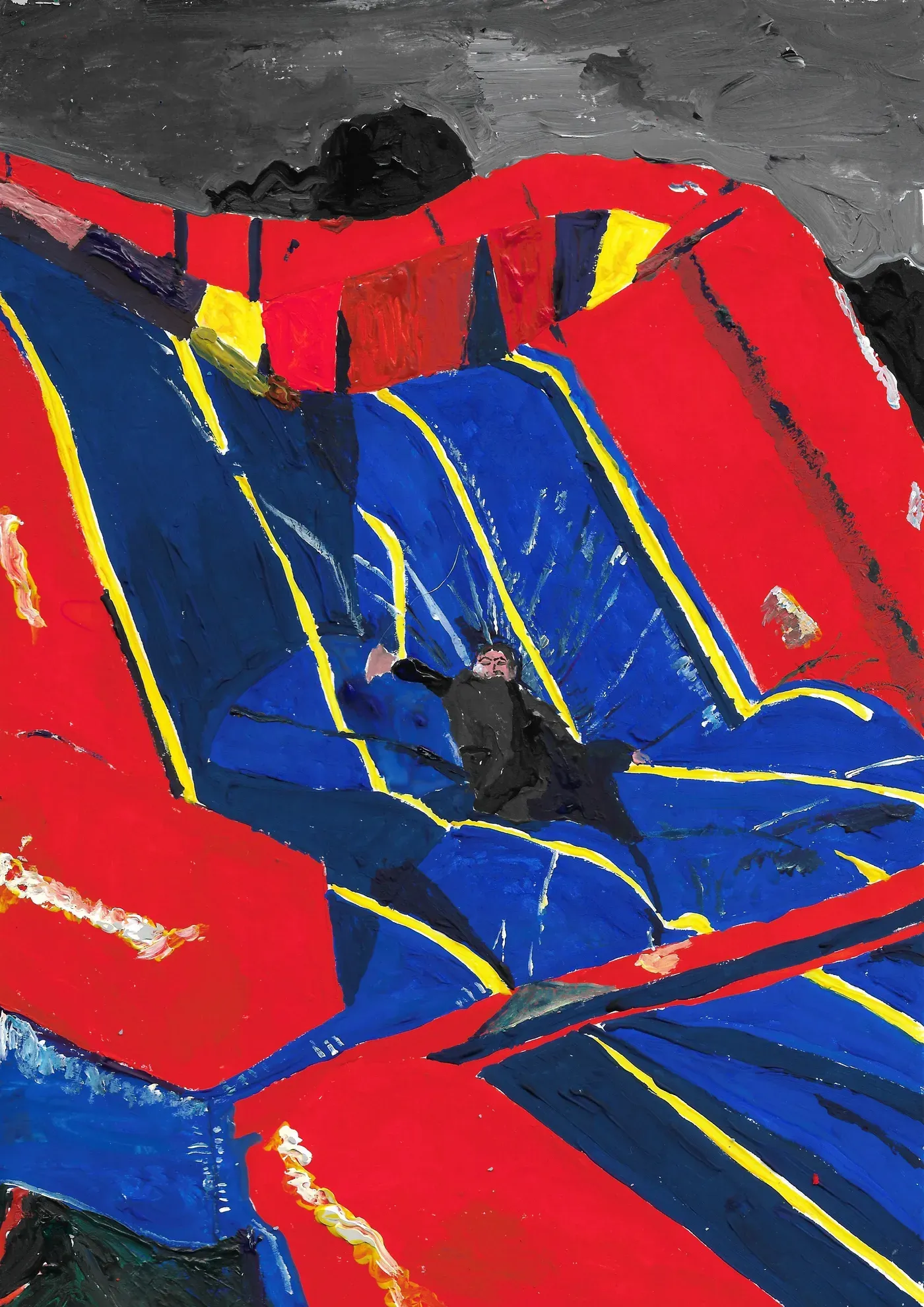

That boundary is psychological. We know what a staircase is. We've climbed thousands. But an empty red staircase, painted with intensity, becomes something else, a site of vertigo, of questions.
Where does it lead?
Why is no one here?
What just happened?
About Ellen Claes
Ellen Claes is a self-taught Belgian painter based in Alken, known for her explorations of empty interiors and overlooked infrastructure.
Her recent shift from abstraction to a more figurative language focuses on transitional spaces, hallways, stairwells, roadwork sites, that bear traces of human presence but reveal no one.
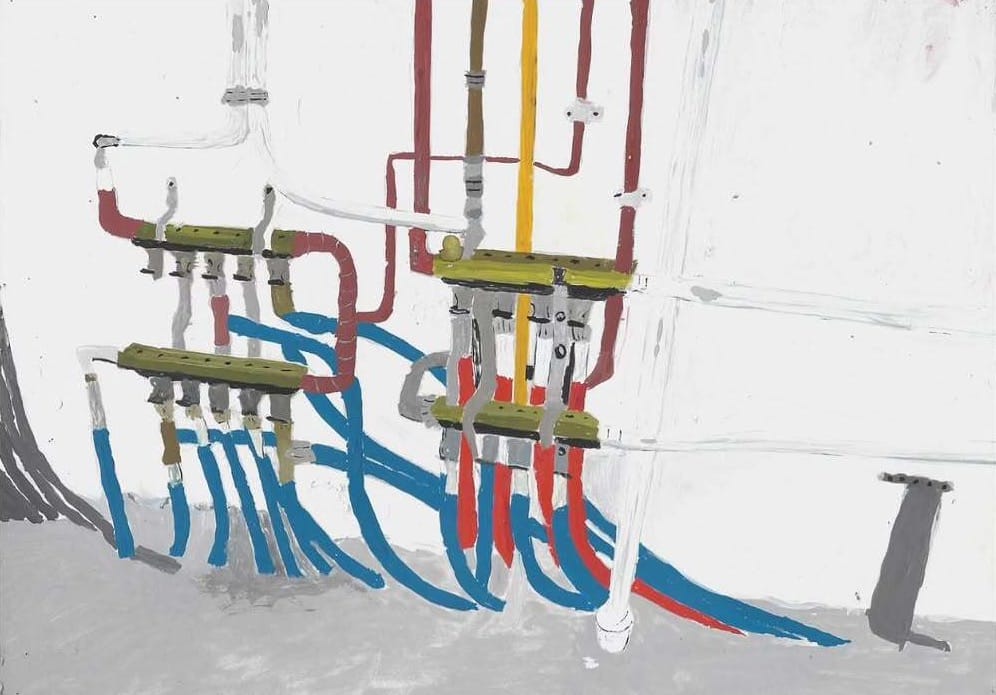
Working primarily in gouache and acrylic on paper and canvas, Claes paints intuitively from her storage room studio, capturing what she calls "the moment before something unseen happens."
Her practice roots itself in slowness and observation as forms of resistance against contemporary speed, while exploring the psychological weight of liminal spaces during personal transition.
Final Words
Can painting slow you down in a fast world? Claes' work says yes but only if you let it. Her control panels, stairwells, and roadwork sites don't offer escape. They offer attention. And attention, sustained and deliberate, might be the most radical act left.
Follow Ellen Claes on Instagram for more daily artworks.
Readers looking for this:
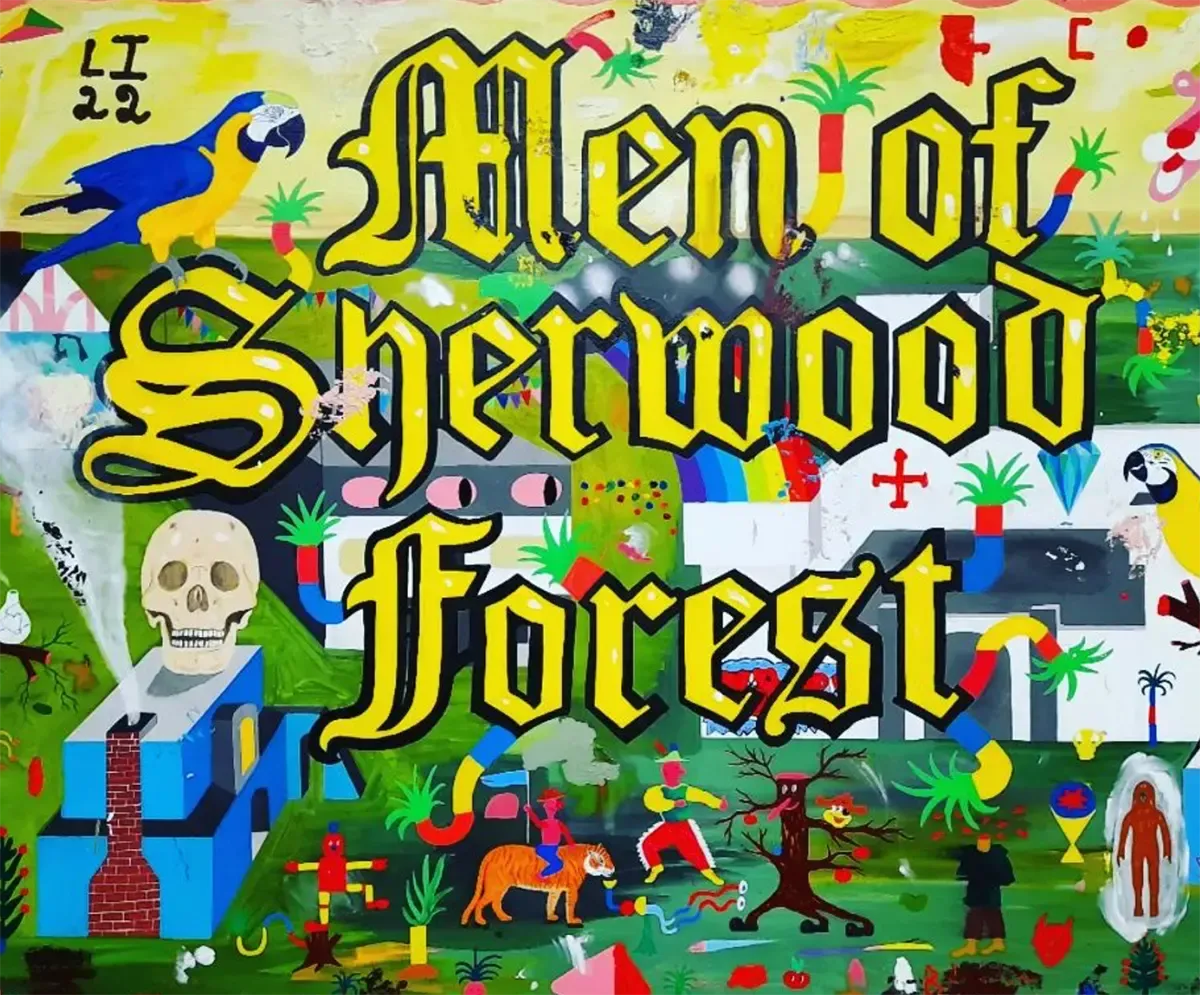
Laurent Impedugia
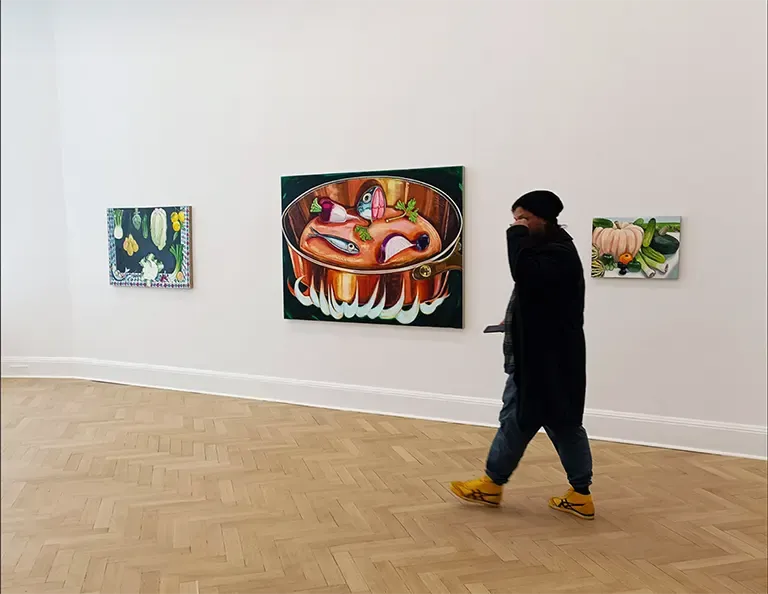
Art Brussels
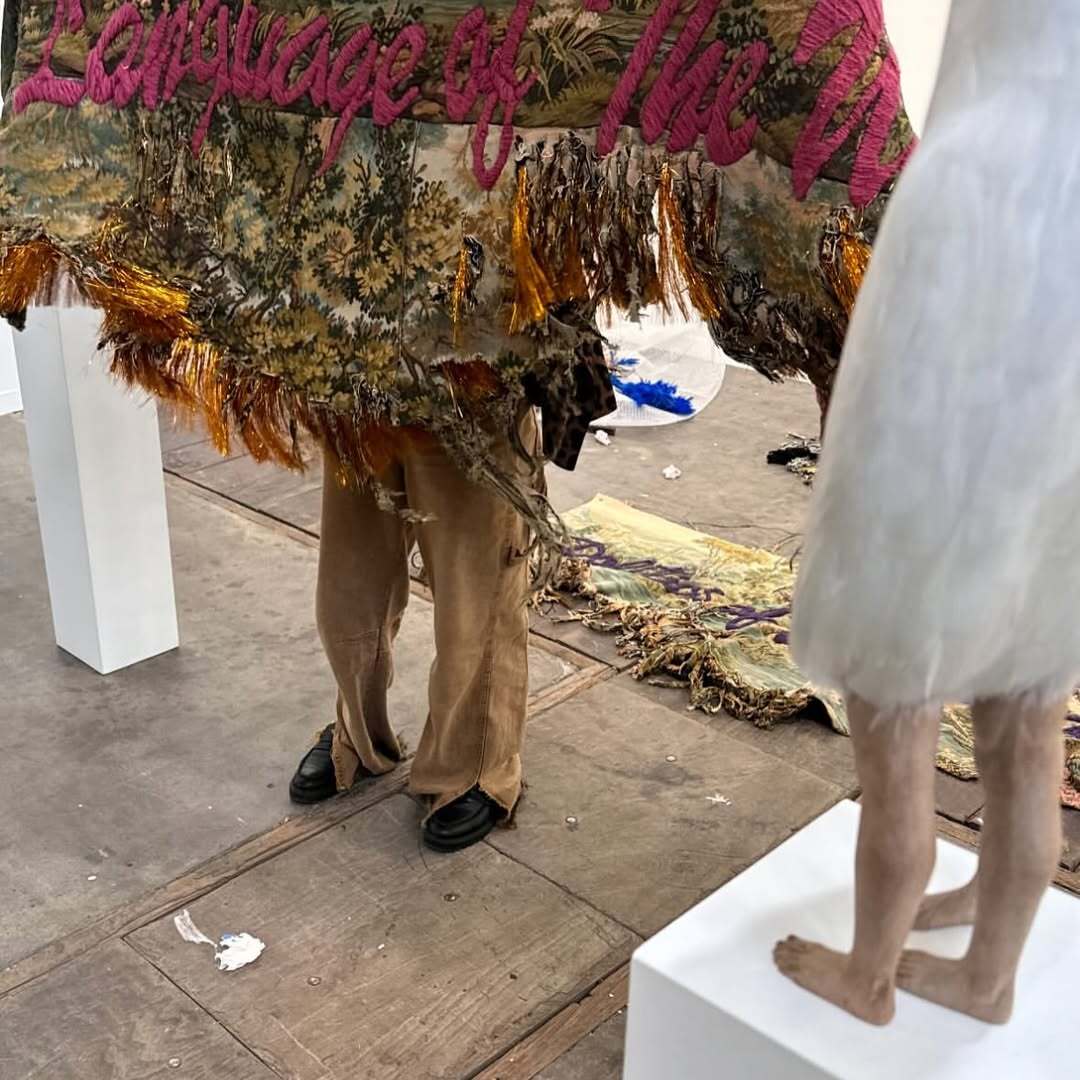
Art Brussels








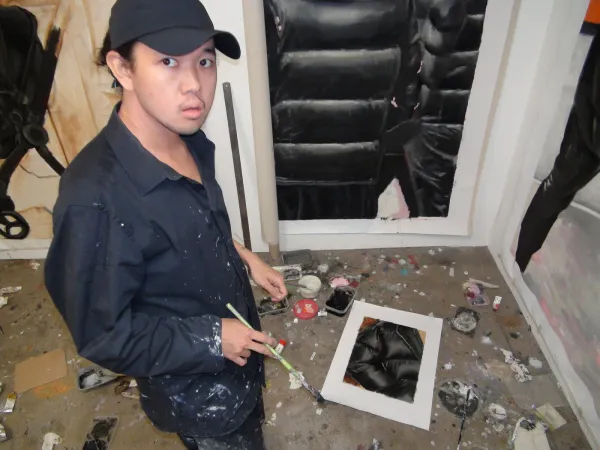


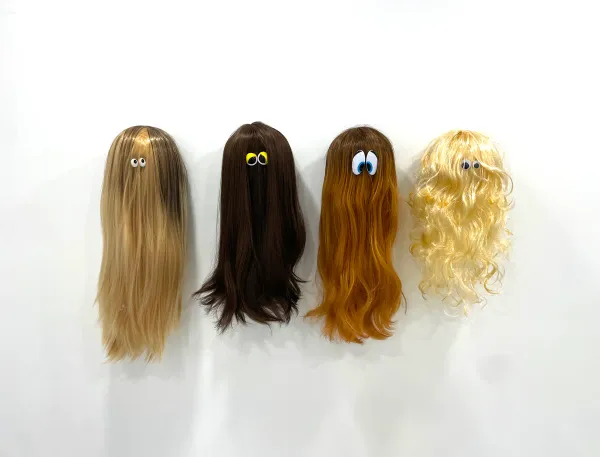
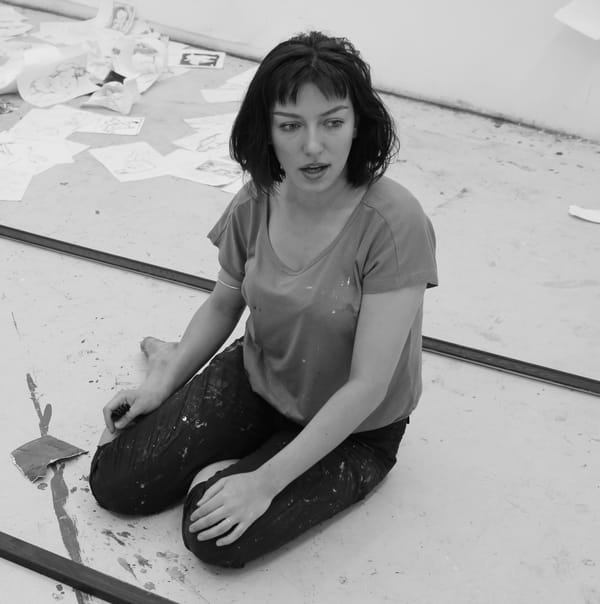

Member discussion